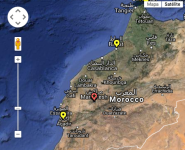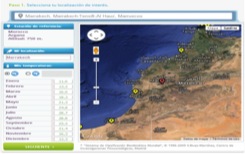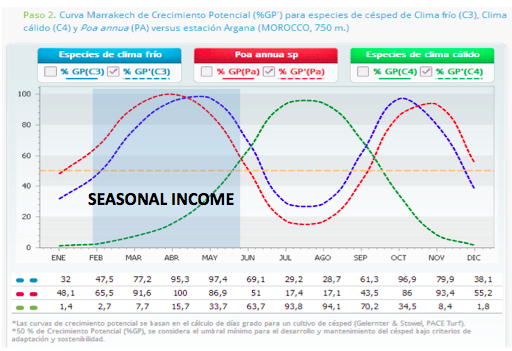Source:
Technical IgK Dpt.
6 May 2015
Analyzing which is the best suited turfgrass species to a Polo Field in Marrakech
This is the question as Greenkeeper, sports fields and constructor you can arise at any given time. In a globalized world, projects are becoming a more international approach. We have to make a decision about what species to establish.
 Analyzing which is the best suited turfgrass species to a Polo Field in Marrackech.
Analyzing which is the best suited turfgrass species to a Polo Field in Marrackech.
Customer communicates the idea that during the months of March, April and May peak season occurs, when the Polo field is hosting the busiest and important tournaments. It´s a seasonal business.
This will take advantage of the benefits offered by igreenkeeping. An agronomic on-line tool that uses agro-climatic prediction systems, and proposes a management model applied to sports turf and ornamental lawns, based on criteria of sustainability and cost optimization.
For decision making, we must bear in mind, first, physiological aspects of turfgrasses: Ryegrasses / Festucas are Cool Season turfgrasses (C3) and Bermuda / Zoysia are Warm Season (C4), but also economic and environmental aspects limiting such as the available budget, irrigation and water quality, soil pH, etc.
Regarding factor agronomic and plant physiology, planning curve is a graphic of phenological development, which evaluates the behavior of different species according to the average monthly temperature.


Through igreenkeeping can choose over 1200 locations around the world where weather data are pre-loaded and you can see the behavior of the different species.
In this case we can find Marrakech.

 The result, after choosing the location, is a curve that describes the potential of each type of turfgrass growth for a representative year. What we see is the most likely behavior, obtained by mean temperature time series over 30 years.
The result, after choosing the location, is a curve that describes the potential of each type of turfgrass growth for a representative year. What we see is the most likely behavior, obtained by mean temperature time series over 30 years.
In the present case of Marrakech, this would be the graphics (although you can access the Web and check it, and if you register, even have the option to customize the averages for any location in the world). With this platform, you can even plan the fertilization of nitrogen needed by turfgrass species fixing your own target by area.
Conclusions
From the curves generated Marrakech get:
- The blue curve describes the behavior of Cool Season Grasses ( ryegrasses , Festucas , etc).
- The green curve in the species of Warm Season Grasess (Bermuda , Zoysia , Paspalum , etc).
- In April, the average temperature barely exceed 18 ° and the months are around 13 and 16 º. This is less temperature than required for germination of Bermuda. If we had an established surface , we would observe that in April the Bermuda is just starting some development , showing dormancy, and their growth potential is only about 7-8% . Therefore the conditions to be a green uniform coverage is virtually impossible for any species of warm season at this time of year. Moreover, the Ryegrass and cool season grasses generally those dates are at 77-78 % , and the features and performance in terms of texture , quality, color, are excellent.
- Therefore, if the seasonal income of the Polo Field is going to give in spring and autumn because high temperatures reduce the practice and use during the summer, the best decision would be to establish ryegrass under agronomic, economic and environmental sustainability criteria.